Sector
Food retail, foodservice
Category
Trends, Consumer behaviour
Author
Maaike van Rooden
Reading time
8 minutes
How do you use plant-based in food retail and foodservice? How do you best respond to the (latent) needs of consumers? And what are strategies to encourage buying plant-based? We visited the Plant Based World expo in New York on the 8th of September. Here we heard the latest insights about the US plant-based market and consumer needs. So now we’ll take you through the differences and similarities with us here in Europe. And we share the learnings of American supermarkets and caterers for presentation and communication to increase plant-based sales.
Motivation for plant-based
The Americans, who opt for plant-based, do so mainly for the intended positive effect on their health. This came up in several presentations. There is a ‘halo of health’ around plant-based food: vegetables, fruit, grains, legumes, and unprocessed products with a lot of vitamins, and low fats. Eve Turow-Paul, author of the book Hungry, researched food culture and links many of our behaviours to Maslow’s pyramid. In uncertain times, when the sense of control is less, people look for what they do have control over. And we can control what we eat. There is increasing attention towards health optimisation (including supplements) and restrictions (such as diets and avoiding ingredients such as sugar and gluten) on the one hand, and the origin of products on the other. This was also noticeable on the shelves in supermarkets. On products, it is stated most prominently whether it fits into the keto diet, whether it is non-GMO (not genetically modified), whether it is produced in America, and what the nutritional values are.
Unlike in America, in Europe, the impact on the climate and animal welfare are more often the decisive arguments for eating vegetarian or vegan, rather than one’s own health. Wicked Kitchen‘s CEO, Pete Speranza, attributes this to the media’s attention to climate and factory farming issues. There are also clear climate objectives and policies at the European level. This creates a growing awareness among Europeans about the current food system.
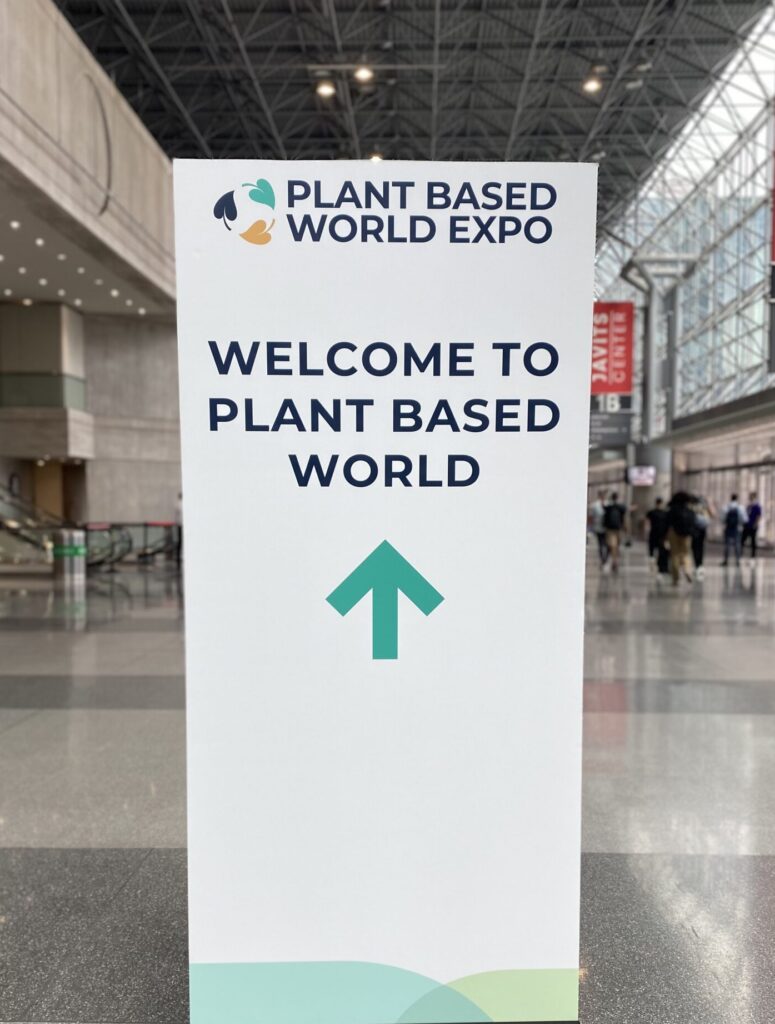
The best presentation and communication in supermarkets and restaurants
In both supermarkets and foodservice, the first phases of the customer journey are the most important in making people choose plant-based products: the moments of awareness and intention. Customers then orient themselves on what they would like to buy, are open to something new, and weigh up the options. The novelty of the product and its taste and texture are relevant triggers in the purchase consideration.
Supermarket chain Kroger and caterer Sodexo have both experienced that the integrated offering of vegan products works better than when a separate department is set up. A separate shelf or food station raises the threshold; customers tend to skip that part, while they may be surprised when a vegan product is presented as an alternative. Customers then choose ‘on the spot’. The visibility of the plant-based offer in all categories also helps normalise plant-based eating. In addition, the barriers that people may have can best be removed this way.
Both parties mention price, taste, and a fear of a short-term feeling of satiety as the most frequently mentioned reasons by their customers for not opting for a plant-based diet. From their experiences, we deduced the following solutions to remove those barriers:
1. Promotion:
Make sure that the vega(n) products are also well represented in the promotions. A (temporary) price reduction will ensure that this range has an accessible price point. This makes a sustainable, healthy choice accessible and attractive to a larger group. (Would you like to know to what extent Dutch supermarkets stimulate consumers with offers to buy healthy food and drinks? View the Superlist Health 2022 (in Dutch) here.
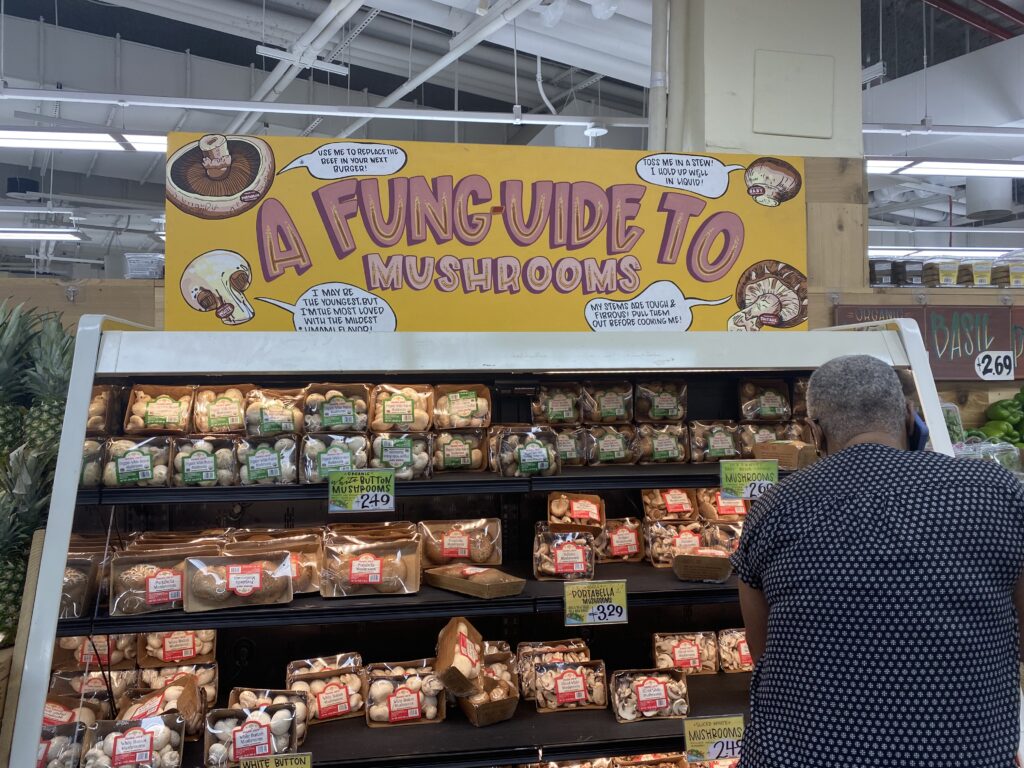
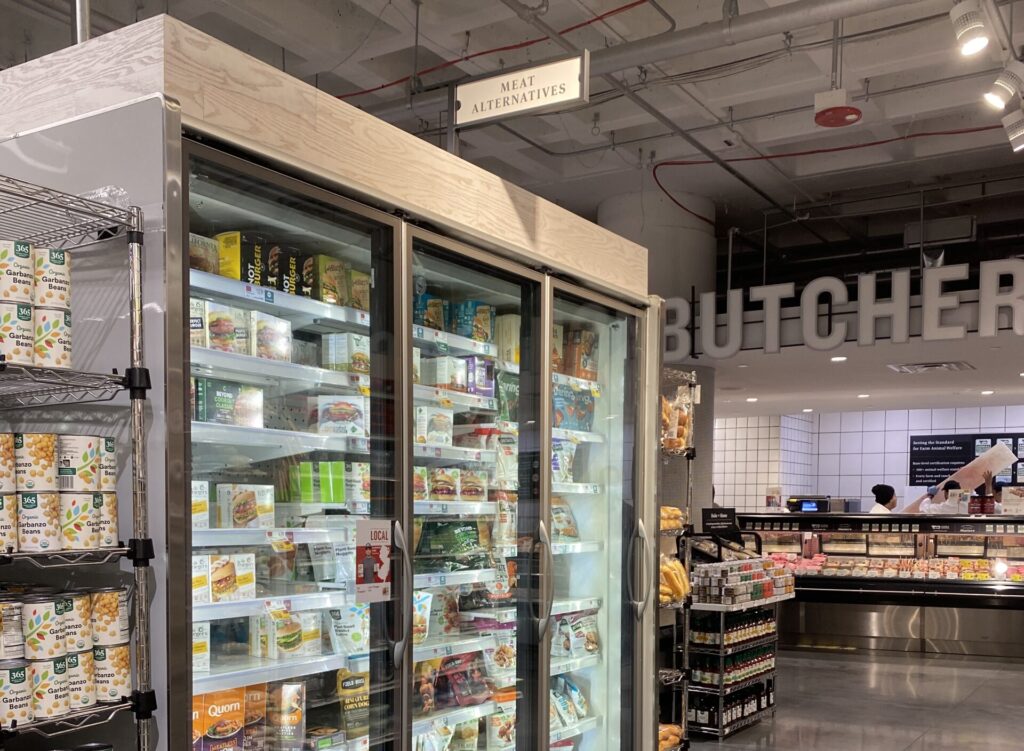
2. Navigation:
Every customer journey should be as smooth as possible. For plant-based products and dishes, which represent only a limited share of the total range, it is even more important that people can easily find this range. Use the signing of the departments in the supermarket, web shop, or restaurant for this. Indicate the product categories within the departments and highlight the vegetarian or vegan range within them.
3. Inspiration and explanation:
The uncertainty that people may have about the taste, texture, and preparation of vegetable products can be removed by giving them ideas. For example, by providing recipes and meal suggestions, where animal ingredients are exchanged for plant-based alternatives. Also, provide information about the benefits of plant-based nutrition and why your company considers this important.
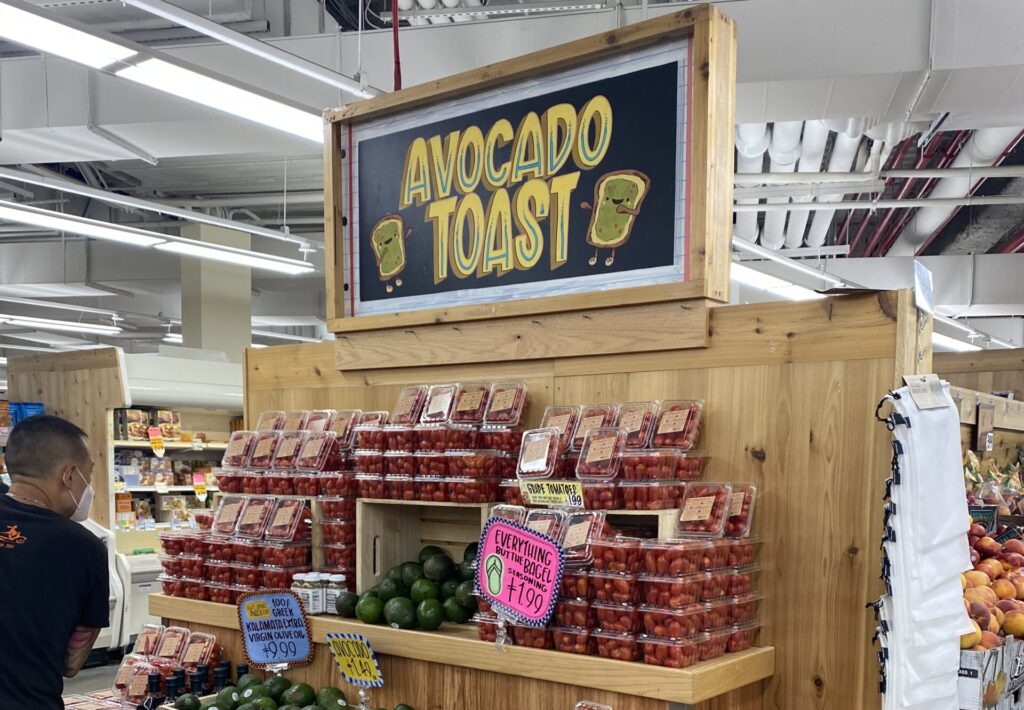
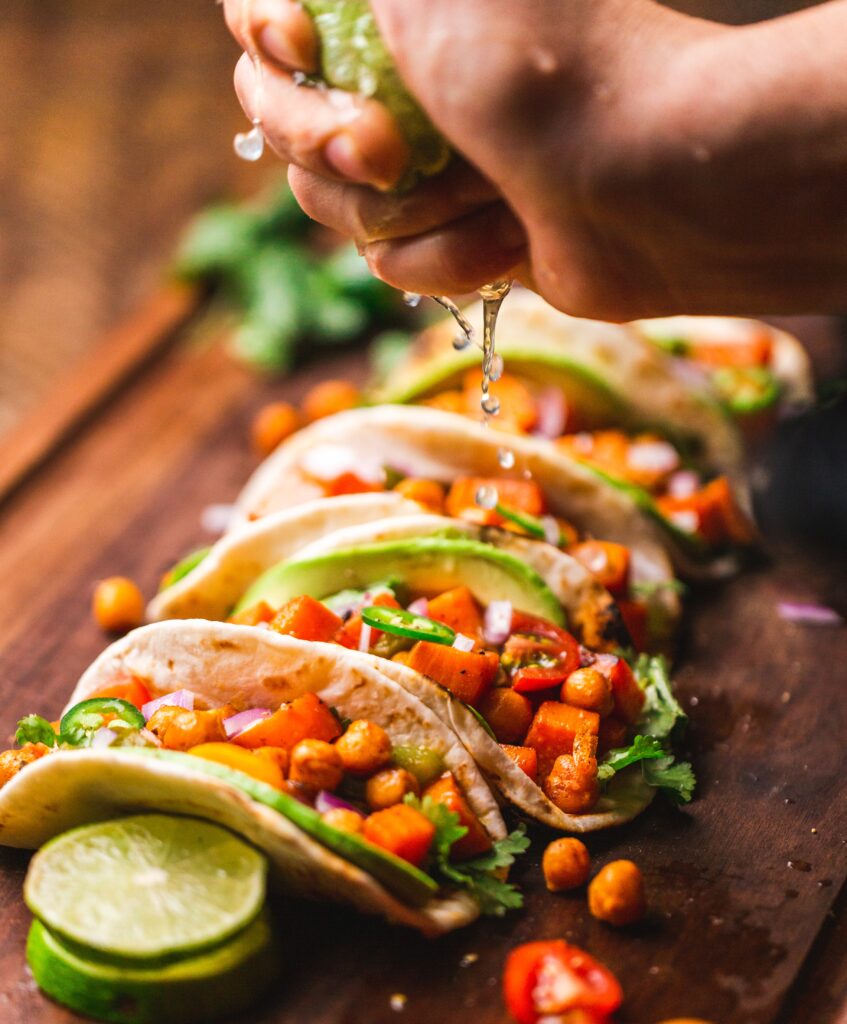
4. Presentation:
Plant-based is not yet the norm and drawing attention to the ‘new’ is necessary to getting people to buy it. However, Kroger and Sodexo have found that it is better to be subtle in order to get this to happen. In addition to integrating the offer into existing departments and categories, the wording also plays a role. Sodexo noticed that sales of the dish sweet potato & black chili beans sold much better than vegan chili, even though it was an identical meal. The packaging design also contributes to the purchase intention: when people can see the product and the texture, for example in transparent packaging, they are more likely to buy the product.
Among the plant-based alternatives in the supermarket, meat substitutes are the largest category. Followed by vegetable drinks, yoghurt, and butter. In terms of sales volume, non-dairy, or vegan, cheese is the third product group. Then comes vegan fish and frozen meals.
The first two are the most accessible categories. Cheese and fish substitutes are even more difficult to replicate in taste. But when people start buying vegan cheese, these customers continue to buy more plant-based products, Kroger notes. They see this product group as a tipping point in purchasing behaviour and needs.
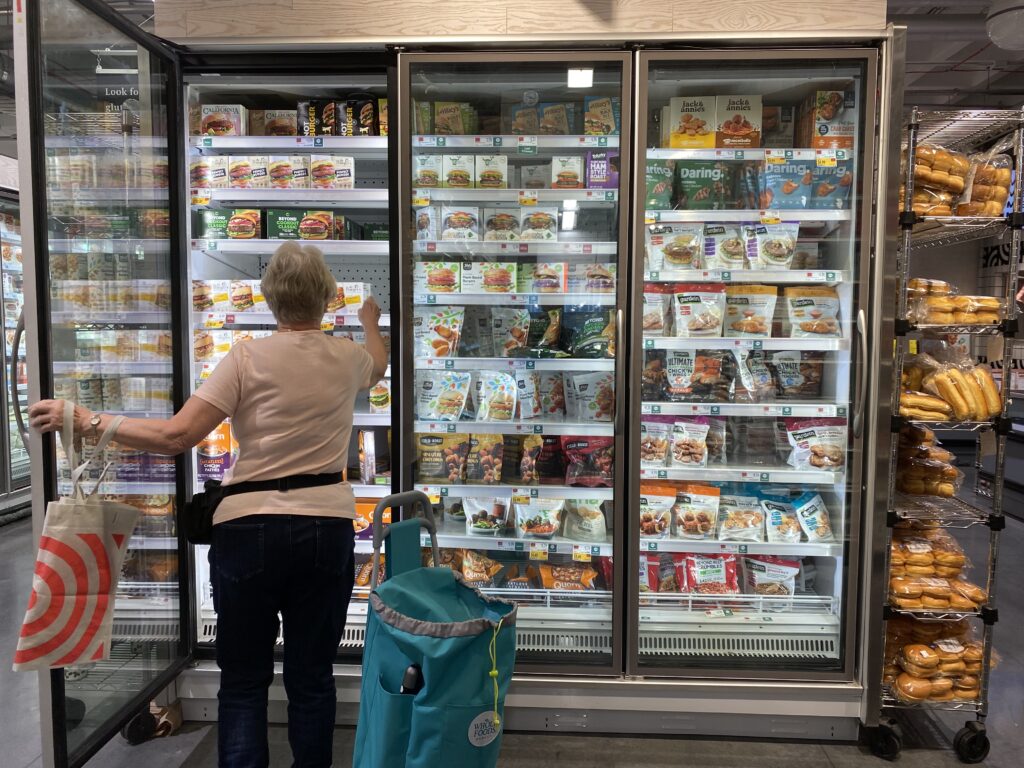
Focus target group
For a plant-based proposition, flexitarians are the most interesting and valuable target group. Flexitarians consciously choose to have a meal without animal products at least once a week. This group is therefore open to a change in their eating pattern and purchasing routine. Explanation and inspiration to help them on their way are important to them. It is also interesting that this group of consumers spends a lot of money in the supermarket: the share of animal products in the shopping cart is not declining so much yet, but the number of vegetable products is increasing, as it turns out. This may be because they experiment and buy plant-based products that are new to them. But it is also possible that part of the family is vegan and therefore there are many times two different meals on the table.
In line with Rogers’ innovation curve, which classifies consumers according to the speed with which they adopt a new product, it does not yet make sense to focus energy on the so-called laggards, who are not yet open to the concept. But make sure that the ‘early adaptors’, the vegans and vegetarians, remain customers by keeping the product range stable for them and also expanding it further. A largely stable assortment is necessary for developing new habits and a shopping routine. In the supermarkets in the Netherlands, there is still too much rotation in the assortment. Supermarkets, for example, regularly switch between new variants of meat substitutes: from their own private label and the larger names such as ‘De Vegetarische Slager’ (which translates to the vegetarian butcher) and Beyond Meat, to the young, emerging vegetarian brands that are appearing on the market. ‘Supermarkets want to send the message: we are working sustainably, but the consumer hasn’t yet caught on. The taste and sense for the products are somewhat inconsistent so you sometimes get it wrong, which is why, for example, the veggie burgers don’t necessarily become automatic,’ says Sebastiaan Schreijen, economist at Rabobank, in an article in the Dutch newspaper Trouw (August 5, 2022).
In America this will be no different. A long-term assortment plan is needed: when growth in the plant-based categories continues to increase (British investment bank Barclays predicts a worldwide turnover of USD 140 billion by the end of this decade), how can you ensure that you continue to serve the various customer groups well with a balanced and commercial assortment, that ensures both recognition and surprise? Understanding the current and future needs of consumers and understanding their behaviour are essential first steps.
Ready to get started?
Do you want to improve presentation and communication surrounding the plant-based range, encouraging your clients to opt for vega(n) more often? And do you want an assortment vision that responds to the expected growth and current and future consumer needs? See how we can help here.

